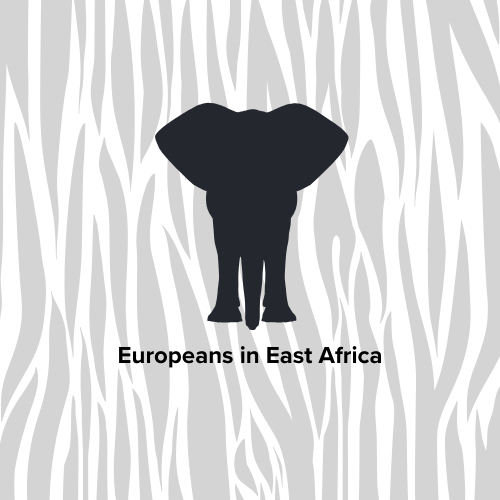View entry
Name: VETTER, Henry Eugene
Nee: bro of Roy Eric Vetter
Birth Date: 7 Feb 1887 Rangoon, Burma
Death Date: 12 Jan 1918 on active service, Mohesi River, Tanganyika
First Date: 1912
Profession: KAR. Farmer
Area: Nairobi, Mityana
Book Reference: HBEA, Hut, EAMR, CWGC, Gazette
War Service: EAMR has H.E. Vetter - MGS 8/9/14 - To KAR
General Information:
CWGC - Dar es Salaam War Cemetery - Captain H.E. Vetter, 3rd/4th Bn. King's African Rifles. 12th January 1918. 5.C.11
EAMR has H. E. Vetter, Private, No. 464
Gazette 10/3/1918 - Probate and Administration in respect of the estate of Henry Eugene Vetter, late of Mityana, who died at Mohesi, GEA on 12/1/1918. Applied for by Frederick George Talbot of Mityana.
Hut has H.E. Vetter 1920 Chania Bridge
Noel Clark: " It was Henry Eugene Vetter (1887-1918) [HEV], elder son of Carlos Vetter and Cecile Mary Talbot (1864-1940), who was the first member of the family to move to East Africa. After living in India and Burma, the Vetter family moved to England before 1901, when they were residing at 25 Chepstow Villas, Kensington, London, except for HEV who was at Beaumont College, Old Windsor, London.1n 1911 HEV then attended the Royal Military College at Sandhurst, from where on 29th August 1906 he was one of a number of ‘gentlemen cadets’ to gain his commission as a 2nd Lieutenant, in the Middlesex Regiment. He was promoted to Lieutenant on 12th January 1910 and then subsequently resigned his commission on 19th April 1911. In 1911 HEV was residing with his mother and sister Beatrice at 3 Egerton Place, Kensington, and described as ‘Lieutenant, Army’. Sometime between 19th April 1911 and 1st November 1912 HEV went out to the East Africa Protectorate and started farming. In 1912 whilst living at Chania Bridge, Kenya (now known as Thika), and presumably farming there, he registered the stock brand “EV2”. The Vetter family were first granted 3,800 acres of land at Thika on a 99-year lease on 1st October 1908, so presumably HEV was farming that land. At some stage before the First World War he also began farming at Mityana, Uganda, although it is not known whether he farmed at both places concurrently. It is likely that HEV was the “Vetter” who played for Uganda in the cricket match played against the EastAfrican Protectorate at the Entebbe Sports Club, 11th-12th April 1914. When war broke out there was a rush of settlers in the Protectorate to Nairobi, where, armed mainly with hunting rifles, they organised themselves into a number of irregular volunteer units of mounted horse. The number of volunteers (approximately 400) was too small to justify a number of independent units, and so these units were amalgamated into one regiment, the East African Mounted Rifles. HEV joined the regiment as Private 464 on 8th September 1914 and served in the Machine Gun Section. He transferred to the King’s African Rifles with the temporary rank of Lieutenant on 21st May 1915 and was promoted to (temporary) Captain on 21st August 1916.
HEV saw at least some service with the 1/4th Battalion King’s African Rifles until 27th February 1917 when he left that unit to return to Nairobi to join the 3/4th Battalion. Whilst serving with the 3/4th Battalion he died of heart failure near Tunduru in German East Africa on 12th January 1918.11 He was buried the next morning on the banks of the Mohesi River, but his body was later exhumed and reinterred at the Dar-es-Salaam War Cemetery in Tanzania.He was awarded the 1914-15 Star, the British War Medal and Victory Medal and these were issued in 1924, presumably to his next-of-kin. The medal roll gives his rank as Major, but all other sources give him the rank of Captain."
